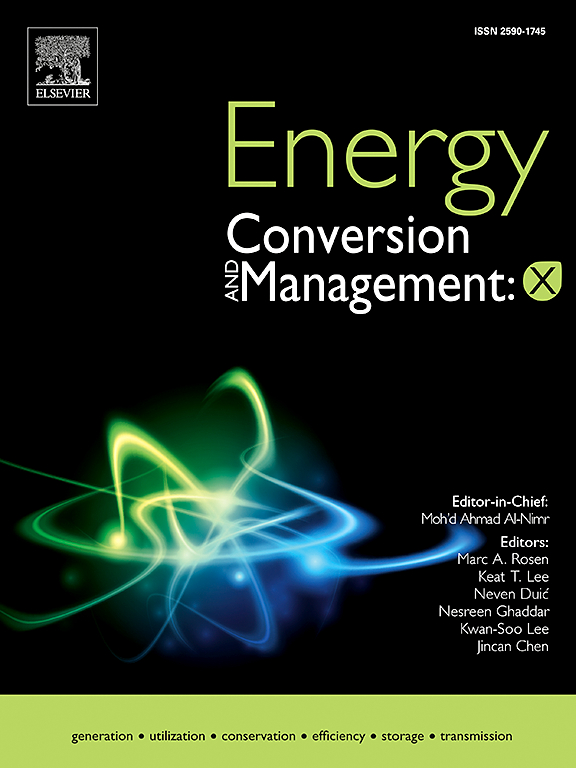Wind farm analysis using SailoR diagram-based diagnostics to quantify yaw misalignment correction
IF 7.1
Q1 ENERGY & FUELS
引用次数: 0
Abstract
This study introduces a novel application of indices derived from the SailoR diagram for detecting and correcting yaw misalignment in wind turbines, which involves an original visualization of principal component analysis. The angular disparity between principal components, visualized as ellipses on the SailoR diagram, serves as a metric for comparing deviations between anemometers within a designated group (External Deviation index) and between the turbine’s anemometer and its yaw angle system (Internal Deviation index). A normalized criterion, incorporating anomalies in power production (Power Bias index), yaw angle, and absolute angle deviation, is established to compare the error of each turbine relative to its respective group. By integrating these indices with the general deviation of each turbine, the analysis effectively discriminates between external and internal error sources and quantifies the magnitude of each deviation. A case study involving a real wind farm with three distinct turbine groups demonstrates the efficacy of this integrated methodology as a valuable tool for initial diagnosis, enabling the identification, discrimination (internal/external), and quantification of yaw misalignment.
求助全文
约1分钟内获得全文
求助全文
来源期刊

Energy Conversion and Management-X
Multiple-
CiteScore
8.80
自引率
3.20%
发文量
180
审稿时长
58 days
期刊介绍:
Energy Conversion and Management: X is the open access extension of the reputable journal Energy Conversion and Management, serving as a platform for interdisciplinary research on a wide array of critical energy subjects. The journal is dedicated to publishing original contributions and in-depth technical review articles that present groundbreaking research on topics spanning energy generation, utilization, conversion, storage, transmission, conservation, management, and sustainability.
The scope of Energy Conversion and Management: X encompasses various forms of energy, including mechanical, thermal, nuclear, chemical, electromagnetic, magnetic, and electric energy. It addresses all known energy resources, highlighting both conventional sources like fossil fuels and nuclear power, as well as renewable resources such as solar, biomass, hydro, wind, geothermal, and ocean energy.
 求助内容:
求助内容: 应助结果提醒方式:
应助结果提醒方式:


